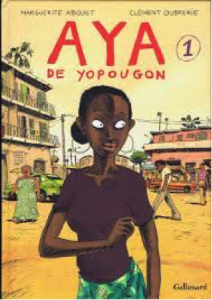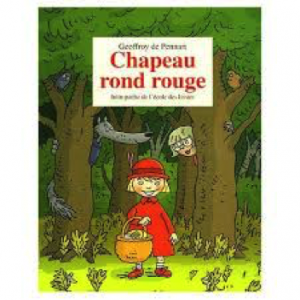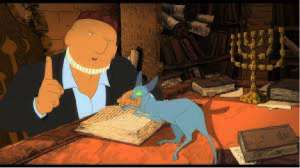Following discussions and collaborations mostly via Zoom in the fall of 2015, Mark Andrews, Baynard Bailey, Thomas Parker of Vassar College and Virginie Pouzet-Duzer of Pomona College are looking for new LACOL partners who would be interested in adding a digital storytelling element to their fourth semester French classroom.
French Digital Storybook created by Vassar students Rafaela Vega del Castillo, Rose Clarfeld & David Sparks.
The current project started at Vassar College when Susan Hiner (Dept. French and Francophone Studies) received a grant to create a course for teaching intermediate French based on authentic French and Francophone story books.
The premise is that during the semester students learn French in the same way a Francophone child would through authenticate cultural material. During the semester, students “grow up,” beginning with illustrated nursery rhymes, songs, fairy tales, myths, and fables then short stories, bandes dessinées, animated movies, and concluding with adolescent literature.

Attached to these texts, the course proposes grammar and writing exercises combined with interpretative and creative exercises, all launched through a digital platform. Most importantly, the course features a student-authored semester-long storybook that students write, illustrate, animate, and narrate in French on a digital platform.
The course has been through several iterations as part of a collaborative effort in Vassar’s FFS department, primarily between Susan Hiner, Mark Andrews, and myself, Thomas Parker, with the active involvement of a succession of French Language Fellows (visiting French assistants). We have been having much success with students who adore the creative element of the course (the book writing), the strong visual emphasis and engaging content of the authentic source material (children’s books), and the different elements and non-traditional pedagogical strategies it provides.
For the technology aspect, we’ve worked closely an instructional technologist – Baynard Bailey. He works with the students to help them to construct their storybooks in Final Cut Pro X. Most students make illustrations by hand, scan them and then import the images into their digital books. Students then record their voiceovers, adding sound effects, music and animation to complement their stories. The videos are exported and uploaded to YouTube, and the scripts go into the closed captions. We’ve refined the process over the years and the evolution of the student work can be seen at http://pages.vassar.edu/ffs-digital-storytelling.

Now we are seeking partners and support to improve the course with colleagues. Our first partner is Virginie Pouzet-Duzer at Pomona College. In the fall of 2016, she is planning to incorporate several features from our version of French 206 into her French 44. She is going to keep the focus on fairy tales, but her syllabus partially let go of the texts originally aimed at a younger audience. Also, she is planning on adding a remote presentation of the final projects, having students from Pomona and Vassar share with each others using Skype or Zoom.
With this new partnership, Mark, Virginie, and I are seeking other Colleges who belong to LACOL to join in. Ultimately we hope to interact between classes and colleges over the course of the same semester, with students sharing their work in some sort of digital symposium format.
In addition to the performative, collective aspect, we are hoping that as a team we will be able to meet a couple of challenges that have come up in the past. These include:

- How could we better integrate text and grammar exercises?
- How could we better make use of web interfaces, or technology in general, to make this a better course?
- Any thoughts or recommendations for different/other content?
- Fair use issues
- Much of this content for children/adolescents does not focus on presenting the same sort of vocabulary as one finds in a regular four-semester language textbook. How much is this an issue? Are there ways of improving the course to make up for this lack?
- More ways of demonstrating how themes in children’s literature are applicable to adult worlds. Some students see it right away. Other, less literary students, take longer?
- Other ideas?
We would like hereby to invite interested readers to reach out to any or all of us if they would like to collaborate.



